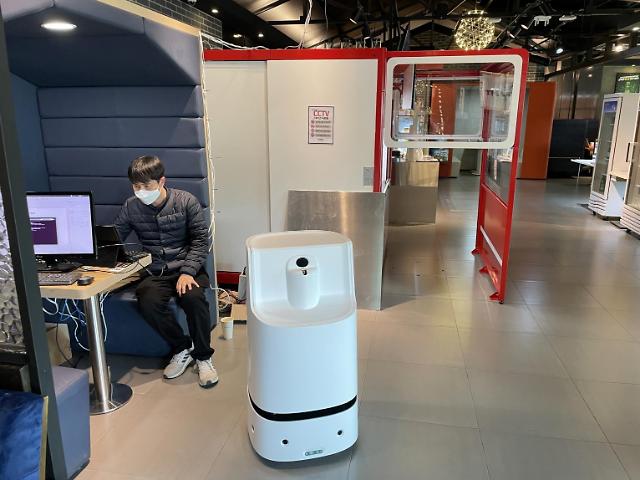
[Courtesy of KIMM]
The global outbreak of a novel coronavirus prompted researchers to quickly develop autonomous quarantine robots that can roam about high-risk facilities such as COVID-19 screening centers and negative-pressure wards to spray disinfectants, filter air and use strong ultraviolet (UV) light-emitting diodes (LEDs) to kill germs and viruses.
The Korea Institute of Machinery & Materials (KIMM) said in a statement on February 9 that its research team collaborated with South Korea's manufacturing equipment maker VisionSemicon to develop a quarantine robot capable of sterilizing and preventing disease infection in crowded indoor facilities. The robot's AI uses a real-time virus spread estimation algorithm to sterilize places with high risks of infection. The algorithm helps the robot to move through an optimized path to maximize efficiency.
Ordinary quarantine robots use very strong ultraviolet-C (UV-C) light lamps tweaked to efficiently damage the DNA and RNA of microorganisms. UV-C LED lamps are used to disinfect the surface of objects such as patients' beds and handrails inside a hospital corridor. However, UV-C treatment can cause skin ulceration and sometimes serious burns. Because the strong light treatment method could harm people, infectious disease prevention robots are mainly operated in vacant areas.
KIMM's robot also uses UV-C lamps but the strong germ-killing equipment is installed inside the body of the robot. When air is sucked in from the bottom part and travels through an air duct, it is sterilized using the UV-C lamp and blown out through an air hole on the top. The smart robot also sprays disinfectants to clean the surface of objects.
"Our newly-developed robot can move through crowded areas to prevent aerial infection and clean surfaces with a disinfectant spray. It can be operable in public places during the busiest times," KIMM researcher Kim Chang-hyun told Aju Business Daily.
Copyright ⓒ Aju Press All rights reserved.




